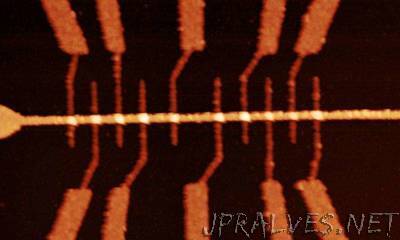
“Previously it was only possible to study these flaws in large numbers. However, fundamental research conducted by University of Twente scientists has now made it possible to zoom in on defects and study them individually. In due course, this knowledge will be highly relevant to the further development of the semiconductor industry. The research results were published today in Scientific Reports, a leading scientific journal produced by the Nature Publishing Group. Computer chips typically contain numerous extremely small defects. There are often as many as ten billion defects per square centimetre. The bulk of these defects cause no problems in practice, but the large numbers involved pose enormous challenges for the industry. This is just one of the barriers to the further miniaturization of chips, based on existing technology. It is, therefore, vital to obtain a detailed understanding of how these defects arise, of where they are located, and of how they behave. Until now it has been impossible to study individual defects, due to the large number of defects on each chip, and the fact that closely spaced defects influence each other. For this reason, the defects were always studied in ensembles of several million at a time. However, this approach suffers from the drawback that it only yields a limited amount of information on individual defects. “
